Tibetan Buddhist monks from Drepung Loseling Monastery will construct a Mandala Sand Painting from Monday, Oct. 21, through Thursday, Oct. 24, in Daugherty-Palmer Commons on the St. Mary’s College of Maryland campus.
From all the artistic traditions of Tantric Buddhism, that of painting with colored sand ranks as one of the most exquisite. Millions of grains of sand are painstakingly laid into place on a flat platform over a period of days or weeks to form the image of a mandala. To date, the monks have created mandala sand paintings in more than 100 museums, art centers, and colleges and universities in the United States and Europe.
Mandala is a Sanskrit word meaning sacred cosmogram. These cosmograms can be created in various media, such as watercolor on canvas, wood carvings, and so forth. However, the most spectacular and enduringly popular are those made from colored sand.
In general, all mandalas have outer, inner, and secret meanings. On the outer level they represent the world in its divine form; on the inner level they represent a map by which the ordinary human mind is transformed into enlightened mind; and on the secret level they depict the primordially perfect balance of the subtle energies of the body and the clear light dimension of the mind. The creation of a sand painting is said to effect purification and healing on these three levels.
The mandala sand painting begins with an opening ceremony, during which the lamas consecrate the site and call forth the forces of goodness. This is done by means of chanting, music and mantra recitation, and will be held on Monday, Oct. 21 from 12 – 1 p.m. in Daugherty-Palmer Commons. The lamas begin the exhibit by drawing an outline of the mandala on the wooden platform.
On the following days they lay the colored sands. Each monk holds a traditional metal funnel called a chakpur while running a metal rod on its grated surface. The vibration causes the sands to flow like liquid onto the platform. This takes place on Monday, Oct. 21, from 1 – 6 p.m.; Tuesday, Oct. 22, from 9 a.m. – 6 p.m.; Wednesday, Oct. 23, from 9 a.m. – 4:30 p.m., and on Thursday, Oct. 24, from 9 a.m. – 5 p.m., in Daugherty-Palmer Commons. Also, the Tibetan Buddhist monks will give a public lecture, “Tibetan Buddhist Views of Death and Dying,” on Wednesday, Oct. 23 from 4:30 – 6 p.m., in Daugherty-Palmer Commons.
Traditionally most sand mandalas are destroyed shortly after their completion. This is done as a metaphor for the impermanence of life. The sands are swept up and placed in an urn; to fulfill the function of healing, half is distributed to the audience at the closing ceremony, while the remainder is carried to a nearby body of water, where it is deposited. The waters then carry the healing blessing to the ocean, and from there it spreads throughout the world for planetary healing. The closing ceremony will be held on Thursday, Oct. 24 from 5 – 6 p.m. in Daugherty-Palmer Commons.
This is the second time Tibetan Buddhist monks from Drepung Loseling Monastery have constructed a Mandala Sand Painting on the St. Mary’s College campus. This year’s visit is hosted by the College’s Asian Studies Department, with support from the Lecture and Fine Arts Committee, Student Government Association, Arts Alliance, and the departments of English, philosophy, international languages and cultures, sociology, art and art history, and music.
For more information, contact John Schroeder at 240-895-2159 or jwschroeder@smcm.edu.



